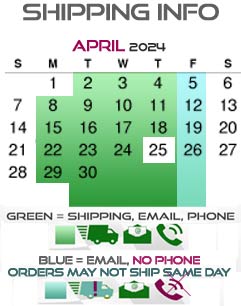Home
::
GUIDE - Installing and Tuning Easi-Tune
GUIDE - Installing and Tuning Easi-Tune
GUIDE - Installing and Tuning Easi-Tune
Fitting Guide/Instructions
| THE WELDIN |
 |
To be fitted preferably, on the inside of a bend, or, in the primary divergence cone of the exhaust system (primarily for very high performance engines ie, CIK reed and rotary engines). It must be sited far enough from the engine, so as not to get too hot, but as it needs to reach 300 to 350 degrees C or higher, ( not too much higher), it can’t be too far away.
FOR GENERAL KARTING USE ,suggested fitting positions in photograph format, are available on the web site. For other usage and fitting, refer to www.easitune.com, or if there is no example, email [email protected], and allow a few days for an answer, also supplying your name and a contact phone no.
|
A basic “rule” for Karting applications is:
- Draw a horizontal line, with texta, on the inside of the bend.
- Draw another line 10mm above the first line, and as near to the flex end as possible, site the weldin on the upper line, taking care that access is okay for the welding method to be employed.
- An 11mm hole is first drilled in the exhaust header, (or a 25mm hole in a muffler), having made sure again, that access for welding is possible all around the weldin.
- Site the weldin over the hole, central, and weld on. On normal steel headers and mufflers/pipes, bronzing is the preferred method, but TIG is best for stainless pipes/headers.
| Filing of the weldin to fit the weld face is not always beneficial. Depth of penetration of the probe is a consideration, especially in a header, and it is not always necessary to insert the sensor it’s full distance. The sensor is temperature dependant. Most weldins are supplied “stepped” and can be fitted into a 25mm hole. This is only normally done when fitting into a muffler.Refer to tech help, if unsure. For unknown applications, the FITTING SITE may be determined by using an INFRARED temp unit, which are now easily purchased at a reasonable price. This needs to be checked whilst running under load. 300-350C is a desired temp. |
 |
| THE SENSOR |
PLEASE REMEMBER the sensor is a fragile item, and should be handled with care!
For 2stroke use, the sensor is “modified”, but for 4strokes, the factory shielding must remain, so at time of purchase, it is easier to be supplied the correct sensor at point of sale.
Where temperature is a problem, i.e, not hot enough at the siting position, sensors are available that have “preheating”. As these require a 12 volt supply, they are only used in larger engines, with their own charging system
For 2stroke use, the sensor is “modified”, but for 4strokes, the factory shielding must remain, so at time of purchase, it is easier to be supplied the correct sensor at point of sale.
Where temperature is a problem, i.e, not hot enough at the siting position, sensors are available that have “preheating”. As these require a 12 volt supply, they are only used in larger engines, with their own charging system
| THE GAUGE |
 |
The Gauge is to be sited where easily seen, but preferably not with the LED’s pointing directly towards your eyes, as they are VERY bright. For use at night, tape or a deflecting shield, needs to be applied to cut down the light intensity. The bright LED’s are necessary for certain conditions i.e. the sun over your shoulder. For a kart, on the steering wheel, above the “other” data system,.is an ideal placement. It is not necessary to use the mounting bracket supplied, as the unit is small enough to mount almost anywhere, a simple matter of “sticking” the velcro to the required mounting position, and attaching the gauge. A zip tie around the gauge unit is a safety precausion to ensure the secure attachment of the unit. The electronics of this unit are very robust, and failure of the electronic components is very unlikely. |
The integrated circuit, the “chip”, if faulty, is easily and cheaply replaced. All other exterior components, cables etc, are also replaceable, with a minimum of technical skills, and a minimum of cost, making the unit easily and cheaply fixed. A fault/remedy guide is available on the web site.
There are 9 high brightness LED’s along the bottom of the gauge, going from the LEFT, 4x red (lean), 2x green, and 3x orange/amber (rich).
Check in the tuning hints for further info.
There are 9 high brightness LED’s along the bottom of the gauge, going from the LEFT, 4x red (lean), 2x green, and 3x orange/amber (rich).
Check in the tuning hints for further info.
| THE SENSOR LEAD |
THE SENSOR LEAD is on a kart, is run around the left side of the kart, away from all ignition sources.
The Sensor Lead is mounted and sited away from IGNITION interference, and on small race equipment, the sensor and it’s leads, should be kept as far as practically possible from ignition leads and rotors, as high voltage inductance is not a desirable item for integrated circuitry, and careful siting almost eliminates electronics failure.
| THE BATTERY PACK |
The Battery Pack is now supplied as a 4x AA case and requires batteries (not included) - rechargables can be used or standard/alkaline dry cells.
| THE MOUNTING BRACKET |
The Mounting Bracket is supplied as a convenient place to mount the gauge unit if there is not a suitable location. It can be, for example, be filed /ground to fit below an Alfano, therefore mounting the gauge higher on the steering wheel.
EASI TUNE Tuning Hints
The Easitune led colours are intended as a guide, to enable you to run your engine at what you determine is the optimum mixtures, with repeatability, to ensure your testing is valid, and not just that you ran slightly different mixtures that test session.
As a general guide, air cooled engines need to be run at a much richer setting, than what is possible with a water cooled.
In situations like speedway, even richer settings are necessary, due to the constant load on the engine with no “backoff”.
In situations like speedway, even richer settings are necessary, due to the constant load on the engine with no “backoff”.
The “perfect” mixture is when the richest red and the “lean” green are on at the same time. HOWEVER, if you ran an aircooled twostroke at this mixture setting, it would rapidly get hot and seize, whereas a fourstroke watercooled could potentially run quite happily.
For ashphalt Kart motors, an aircooled needs to run much richer all the time,to achieve sustainable laptimes, without “going off” or seizing.
|
A typical ideal scenario for an acceleration run would be:
|
 |
This gives you, all things being equal, a sustainable laptime. If used in conjunction with a head temp/tacho, and a laptime, you can work out where you have to run the mixtures, for your best laptimes.
A water cooled engine can be run potentially leaner, on a constant basis, but a good idea if you want to push the envelope, would be to wait till you are due for a topend rebuild, and do it then.
Generally, if you are a little lean, the head temp starts to climb, and the engine goes off, losing bottom end as the first symptom.
Generally, if you are a little lean, the head temp starts to climb, and the engine goes off, losing bottom end as the first symptom.
 WHEN YOU HAVE A PROBLEM, both engine and chassis, it often becomes apparent during the acceleration period, showing up as a “leanout” or a very rich area.
WHEN YOU HAVE A PROBLEM, both engine and chassis, it often becomes apparent during the acceleration period, showing up as a “leanout” or a very rich area. A chassis binding up, will cause leanout as you exit the turn, as the extra load on the engine, causes the engine to need more fuel, which the carby can’t supply on it’s present settings.
Car carbies have a powervalve fuel supply circuit, to cope with extra load situations, but the concentric twostroke carby relies on the backoff time to load up the crankcases with excess fuel, which is why the lights flash amber on initial acceleration, if the carby is right.
When a situation arises, due to the track nature, or a chassis problem, and the engine is observed with a lowspeed leanout, choking, or more roll time, or not closing off the throttle fully, can help allieviate the problem.
Midrange leanout is a big problem, in Karting, as the carby is asked to meter fuel over a wide rev range, and as your midrange is the power peak area, and the area of most fuel requirement, it is sometimes impossible to “get it right” all the time.
When you have problems, tell your engine builder ALL the info, including the problem areas, what the lights are doing at all points thru the rev range, so he can determine what to do.

















